Do over
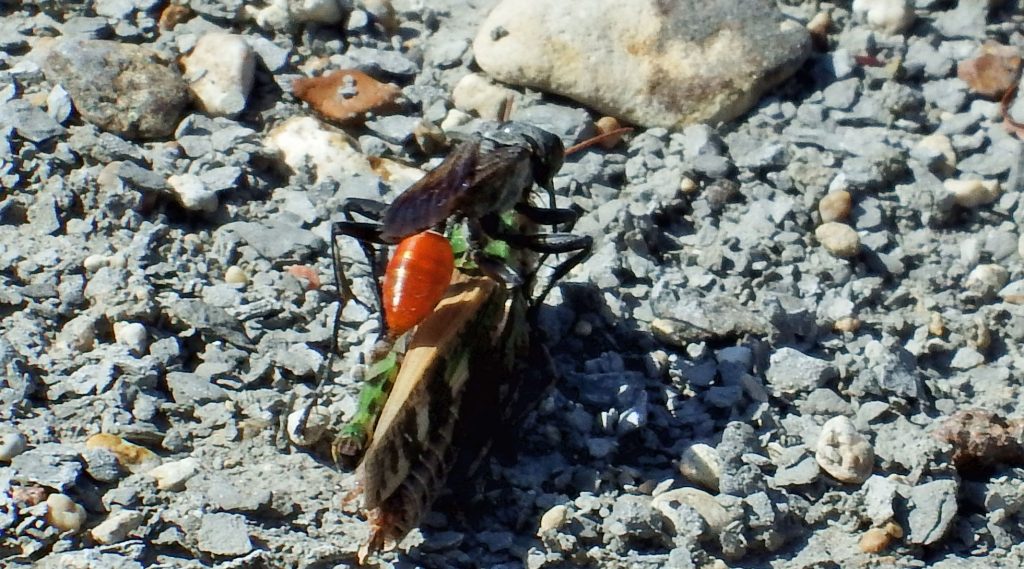
Two years ago, I saw something I had never seen before. It was during our regular walking tour, so a bunch of other people got to watch it with me, but the only photograph I managed to get was of the footprints left behind.
What we saw was a wasp laboriously dragging an immobile caterpillar across the silt.
I have regretted ever since that I did not get a photo or video so I could share it on the blog. But last Saturday, I saw it again and this time, I had my camera. The only hitch is that I didn’t see it in the Park. I was in north Texas for the Texas master naturalist state conference. So I’m calling a do-over.
In the video, notice how huge the grasshopper is in comparison to the wasp, and then, realize that what to us are small pebbles are, to the wasp, significant hurdles. She is doing is the equivalent of dragging a refrigerator over an obstacle course. And she makes it look effortless. In the slow motion part, notice how she maneuvers the grasshopper in-between the larger pebbles.
Since the wasp I saw in the Park was dragging a caterpillar (an armyworm, as I recall) it was likely a different species. The wasp I saw in Ladonia was in the genus Prionyx. I know this because she was dragging a grasshopper.
Solitary wasps are amazingly specialized in what they feed their offspring. In this way, a lot of wasps can live right next to one another without having to fight over resources. One wasp feeds her young caterpillars, another spiders; Prionyx prey upon grasshoppers.
Wasps that live in hives (which are what most people think of when they think of wasps) have very different lives from solitary wasps. At some point, I will write about colonial wasps, but this post is about solitary wasps.
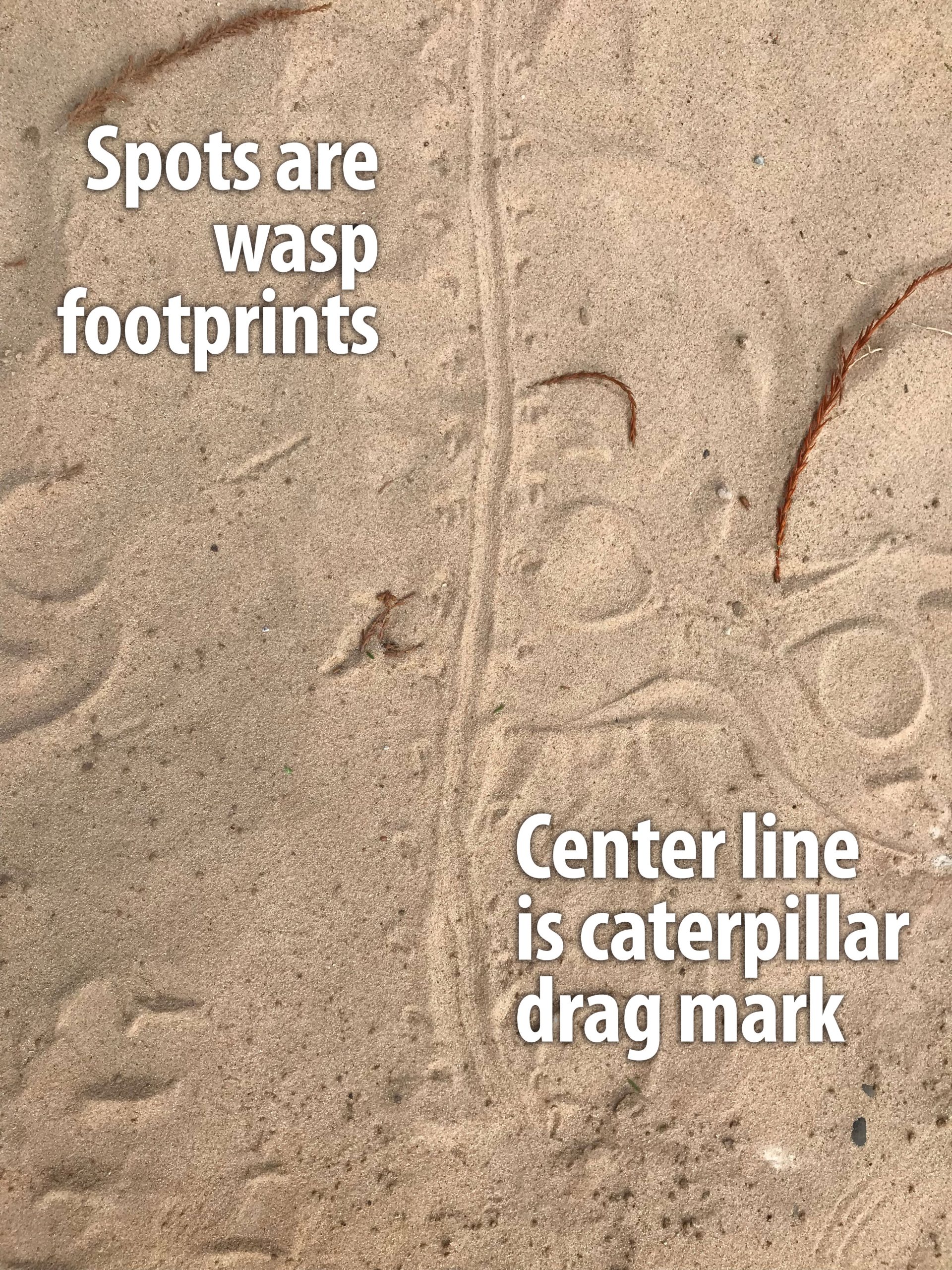
These are the tracks made by the wasp dragging a caterpillar I saw in our Park.
Adult solitary wasps live on nectar and occasionally a bite or two of a critter. They don’t need a ton of food because they don’t live that long. They have only one job: reproduce.
A female Prionyx must mate, then must deliver a paralyzing sting to a grasshopper. She drags this grasshopper to a promising spot, digs a hole, drags the stunned grasshopper into the hole and lay an few eggs on it. She covers it all over and her job’s done. I could not find information on how many times a female wasp will do this, but I suspect it is more than once. My reading indicated that she lays only one or two eggs per grasshopper. That isn’t enough to ensure species survival so I suspect many grasshoppers meet this fate at the hand of a single female. What I do know is that her young are well provided for.
The principle here is kind of like when your mom was out but left you some food in the fridge so you didn’t starve. Lacking refrigeration, the wasps can’t store dead food for very long; that’s why the grasshopper is stunned rather than killed. It lasts longer.
The wasp eggs are more or less attached to the grasshopper so that as soon as they are born, they can start right in eating. While adult wasps live on nectar, larva are pure carnivores.
Diabolically, these larva do not excrete their waste products because to do so might kill the host they are eating. They want their meal to stay alive as long as possible because they will feed on it for about five months. They store their waste internally until the host is dead and then they expel it all at once before they begin their final transformation from larva to adult wasp, which will be done in a cocoon.
I don’t know how long the wasp remains in the cocoon, but it is clear that the bulk of the wasp’s life is spent between egg and emergence as a wasp. After that, it’s mate, stun a grasshopper, dig a hole and lay a few eggs.
Shortly after I photographed this wasp, she abandoned the grasshopper and began flying in circles as though looking for something. At the time, I thought she was looking for the hole she had dug in preparation for the grasshopper, but it turns out they stun the grasshopper first and only then dig the nest. This makes sense because you can’t predict where you will find a grasshopper to stun and the size difference between the two means the wasp can drag the grasshopper only so far. So she stuns her prey and then looks for a good place to set up her nest.
I don’t know how many nests each adult Prionyx makes. But I am fairly sure they don’t survive very long. The average life of an adult wasp is only 12-22 days.
During the conference, I was also able to spend time at Hagerman National Wildlife Refuge. They maintain a pollinator garden which was overflowing with butterflies, moths, bees and other assorted insects. North Texas has been without significant rainfall for some time and this maintained garden was one of the only well-stocked nectar/pollen sources around.
Most of the butterflies I saw are also found in our Park, but I have to admit, the wildlife refuge had a lot more of them. In our defense, they have 12,000 acres we have 160.
I got some lovely photographs of lady butterflies (lady is a species, not a gender in this case), both painted and American. For the five of us who really want to know how to tell these similar butterflies apart, the photos will tell the tale, but mostly, I just like looking at them and hope you will as well.
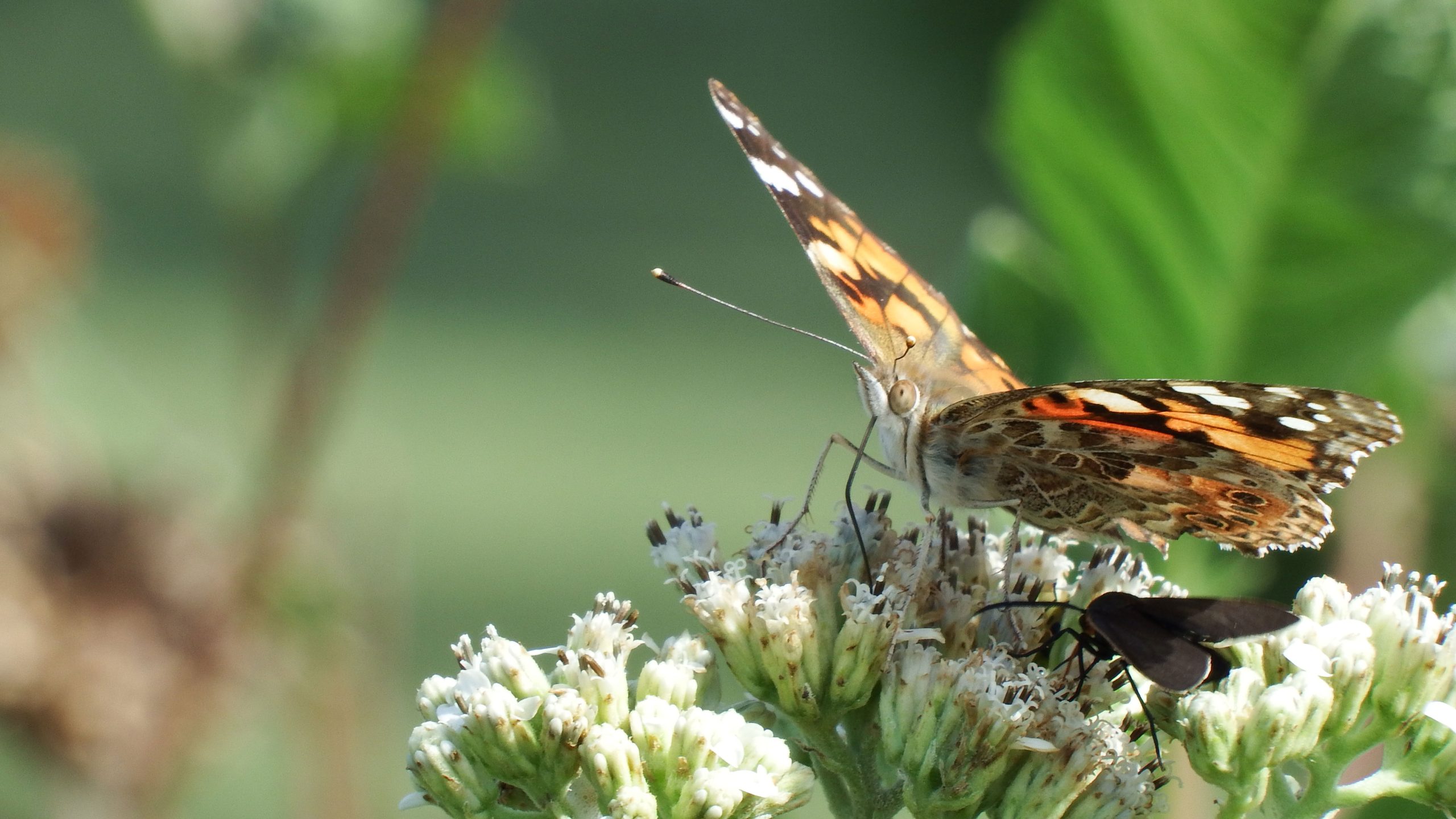
American lady butterfly. Her black proboscis is stuck deep into this late-blooming boneset. The photo bomber is a yellow-collared scape moth.
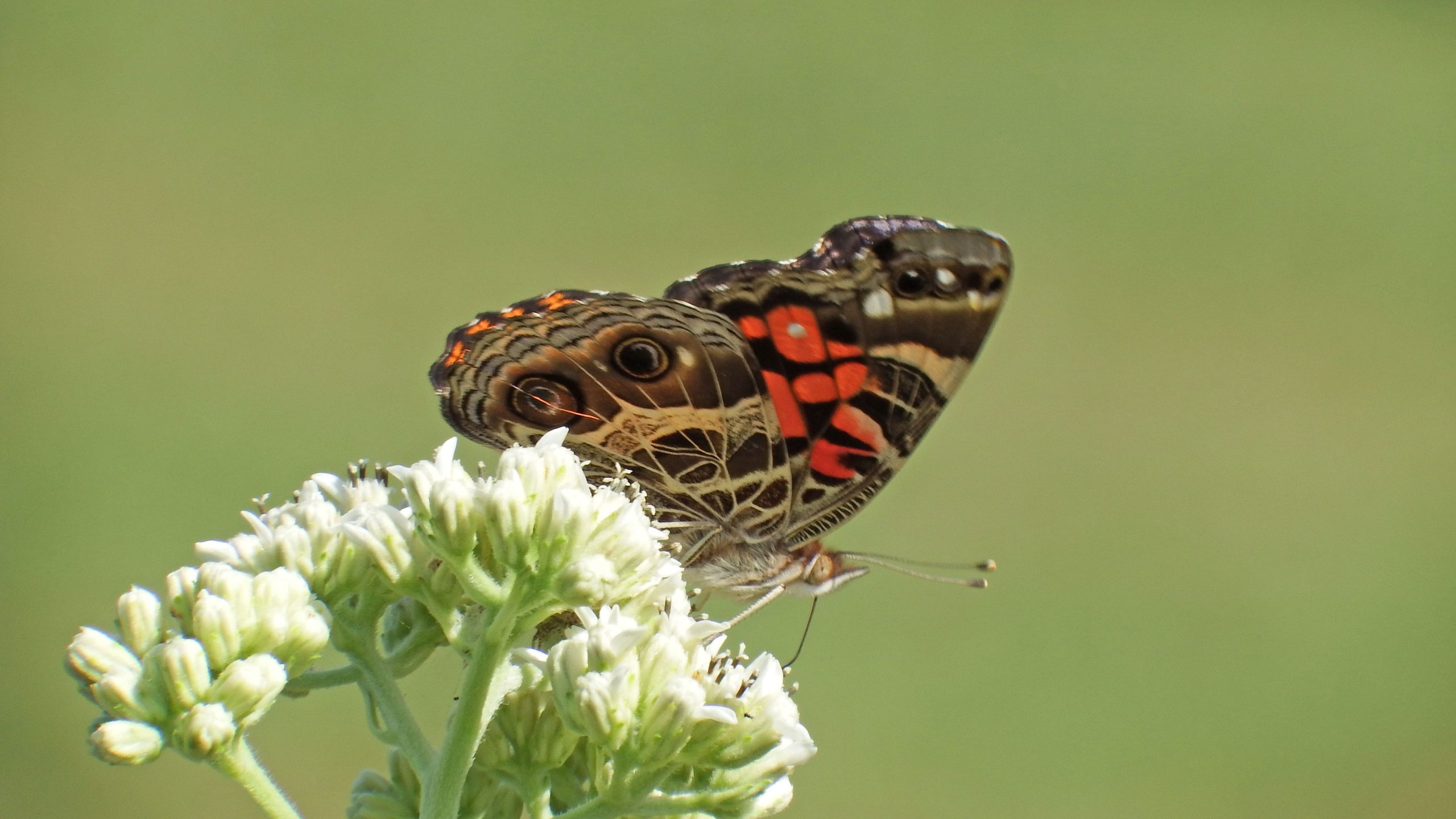
This is a painted lady. Notice that she has two big eyespots on the underside of her hindwing. You can also make out a small white dot in the orange section of her forewing. This dot (which is visible on the top of the wing) is present only on the painted lady.
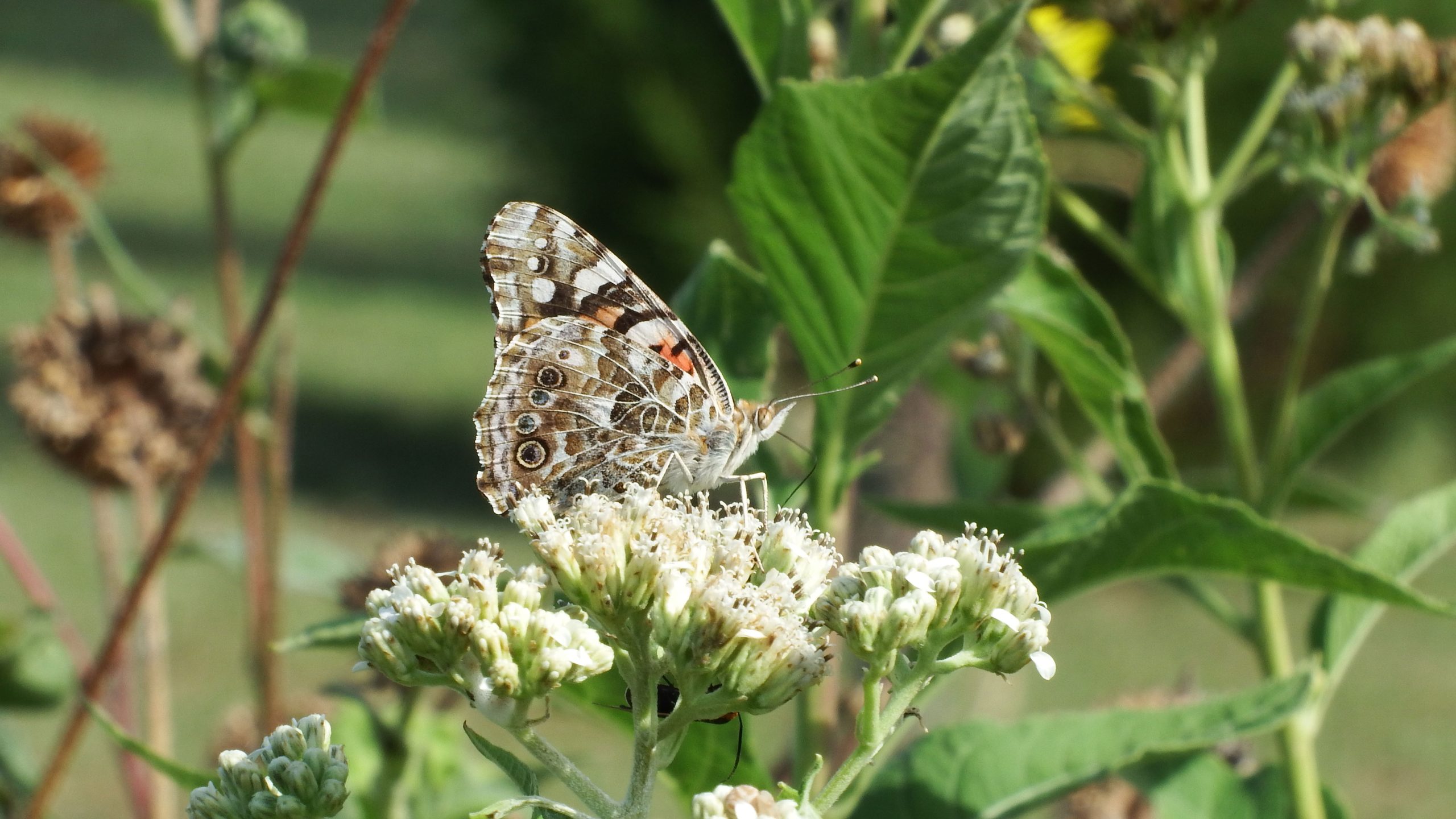
This is the American lady. She has four eyespots on the underside of her hindwing. The apparent difference in color between this and the painted lady is due only to the light. In the same light, they look almost identical.

